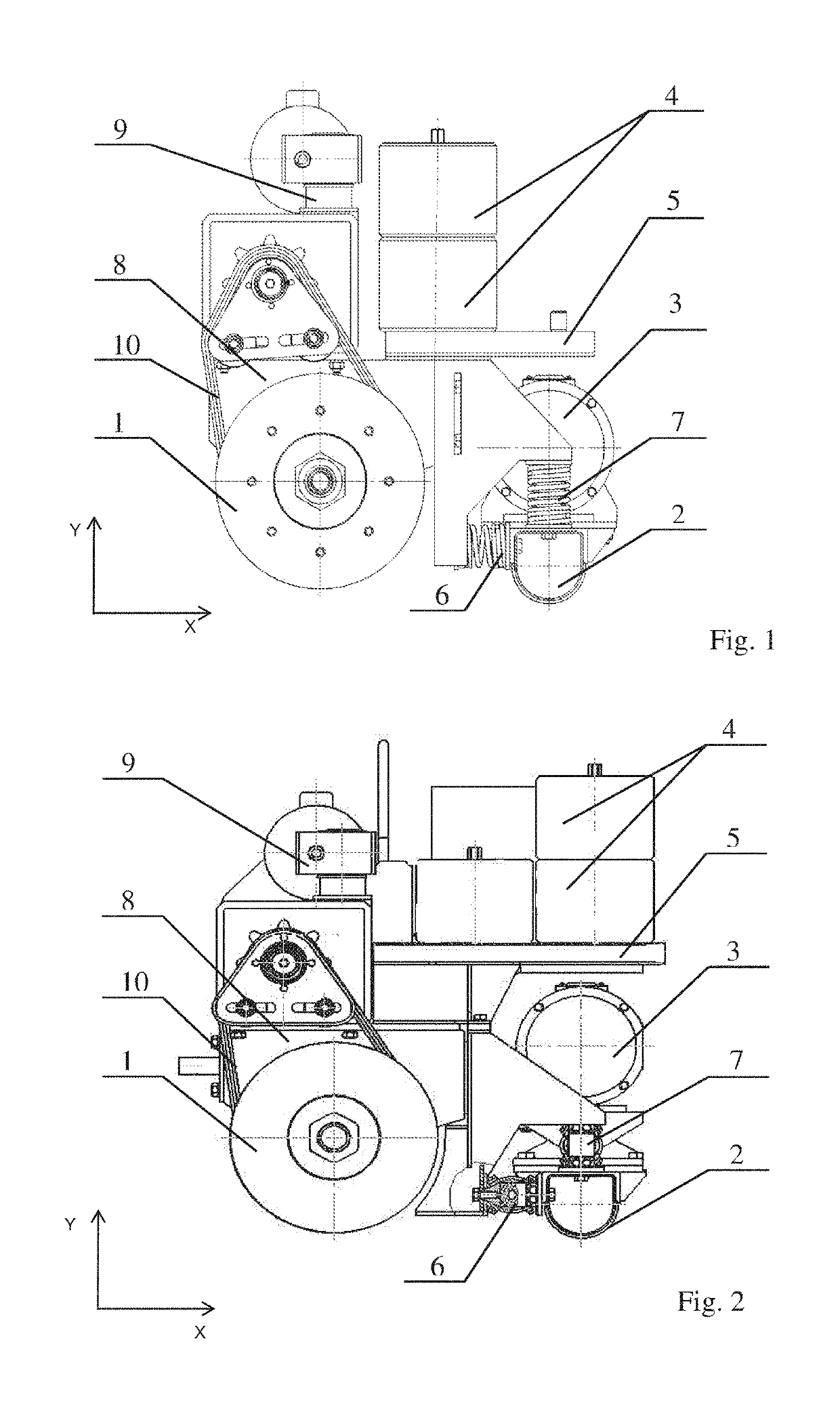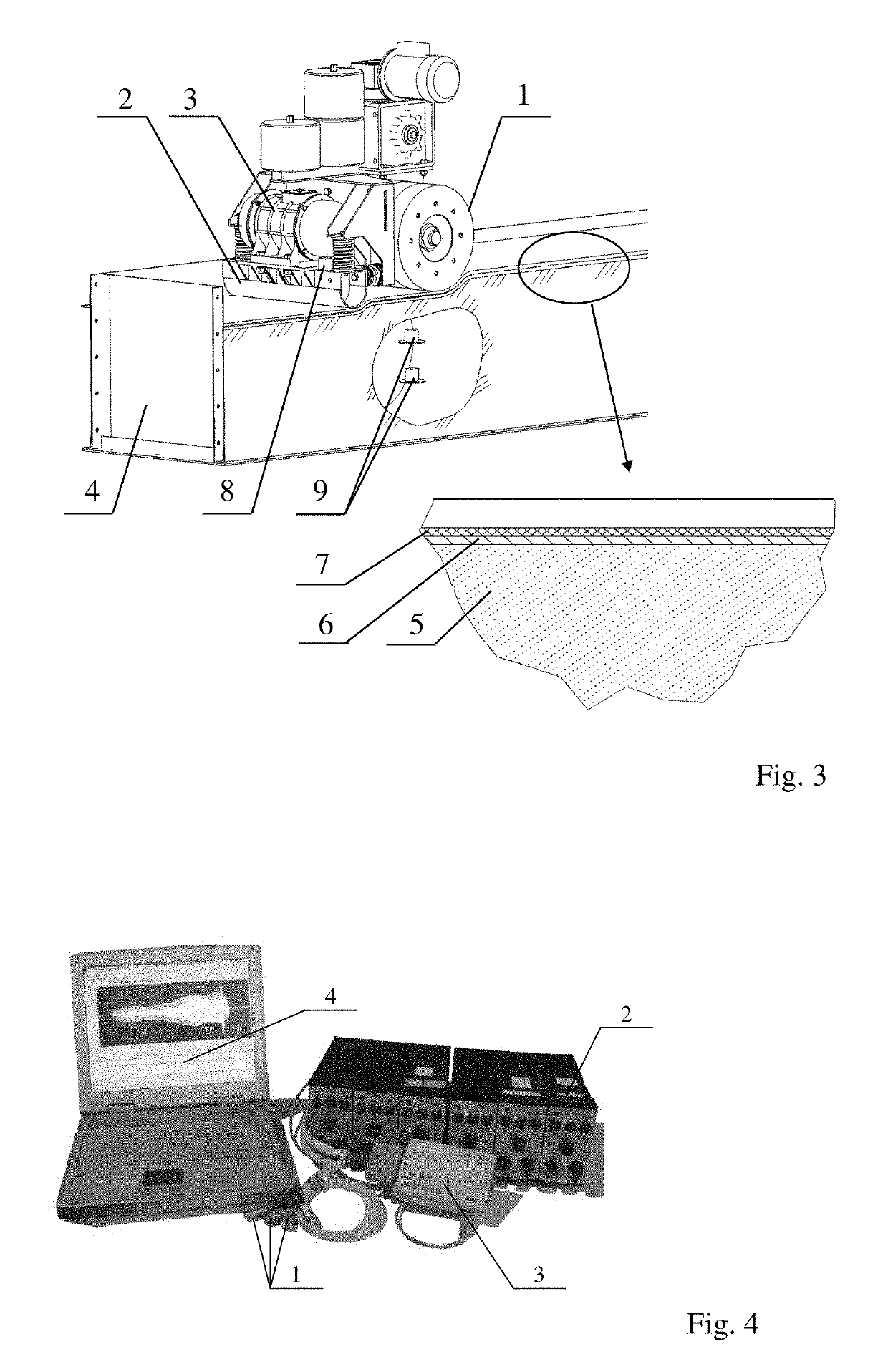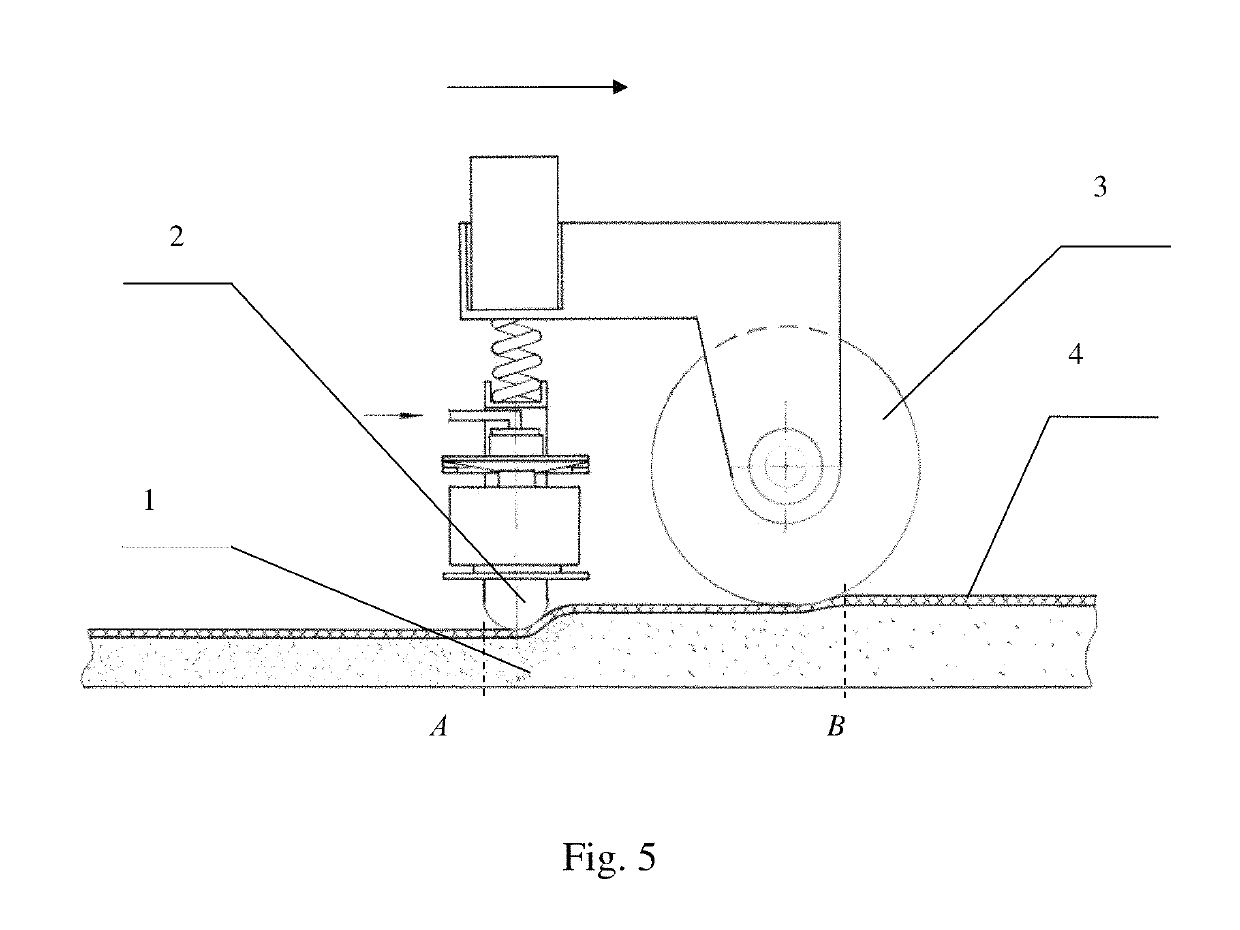Method and apparatus for lining the cathode of the electrolytic cell
- Summary
- Abstract
- Description
- Claims
- Application Information
AI Technical Summary
Benefits of technology
Problems solved by technology
Method used
Image
Examples
Embodiment Construction
[0059]The essence of this technical solution is illustrated by an example of specific design and drawings. FIG. 1 shows an apparatus for forming seamless lining layers in electrolytic cells (side view) with elastic elements made of metal springs; and FIG. 2 shows an apparatus for forming seamless lining layers in electrolytic cells (side view) with elastic elements made of rubber.
[0060]The apparatus for forming seamless lining layers in electrolytic cells consists of driving disks 1, which form a drive unit for static compaction (in the form of a roller), vibratory unit 2 with vibrator 3, weights 4 located on load platform 5, which is connected to vibratory unit 2 by means of elastic elements 6 and 7 (made of metal springs in FIG. 1 and rubber in FIG. 2), 5 which combine the vibratory unit and the static treatment unit into a compaction device by means of rocker arm 8, including the ability to freely move the vibratory unit along the horizontal (X) and vertical (Y) axes (anchor) of ...
PUM
| Property | Measurement | Unit |
|---|---|---|
| Weight | aaaaa | aaaaa |
| Force | aaaaa | aaaaa |
| Acceleration | aaaaa | aaaaa |
Abstract
Description
Claims
Application Information
 Login to view more
Login to view more - R&D Engineer
- R&D Manager
- IP Professional
- Industry Leading Data Capabilities
- Powerful AI technology
- Patent DNA Extraction
Browse by: Latest US Patents, China's latest patents, Technical Efficacy Thesaurus, Application Domain, Technology Topic.
© 2024 PatSnap. All rights reserved.Legal|Privacy policy|Modern Slavery Act Transparency Statement|Sitemap



